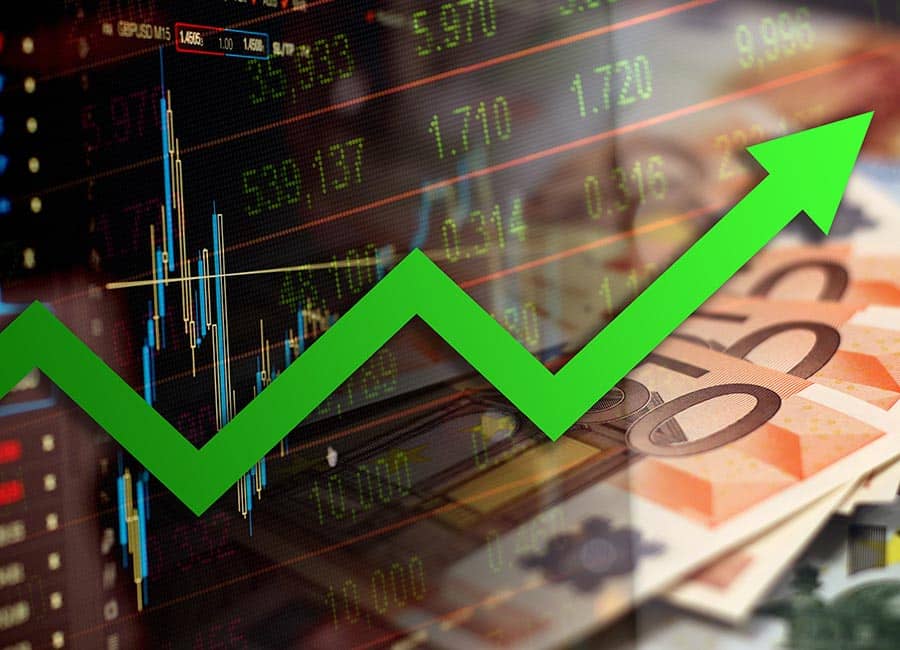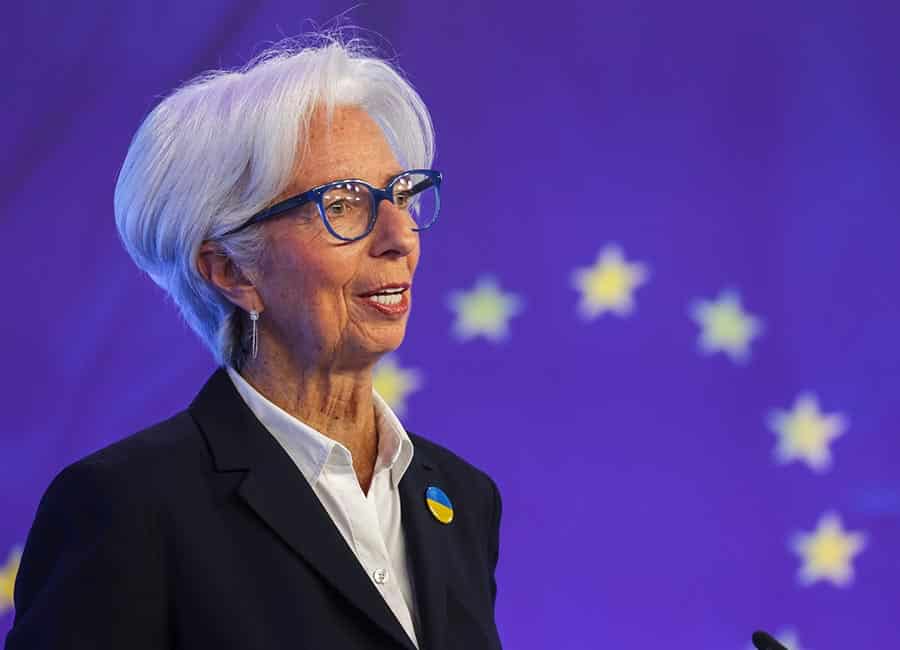Ahead of the European Central Bank raising interest rates next week for the first time in over a decade, Jake Mulcahy explains why authorities in Europe have been slower to tighten monetary policy than in America
To paraphrase Karl Marx, a spectre is haunting the rich world – the spectre of inflation. As the pandemic has receded from view, governments and central banks are grappling with the fastest rates of inflation in decades left in its wake.
In the eurozone area, year-on-year inflation came in at 8.6% in June, the highest rate since the adoption of the euro two decades ago. In the United States, consumer price inflation in June was 9.1%, a level not witnessed since 1981.
The take-off in inflation has jolted central banks into action, after having spent most of 2021 hoping to ride out the effects of supply chain snafus. The Federal Reserve has committed to shrinking its $9 trillion balance sheet by selling bonds or letting them mature, and markets expect it to have raised interest rates by three and a half percentage points by the end of the year.
The path of tightening of the European Central Bank is somewhat more uncertain. Rates will be raised for the first time in 11 years on July 21, and the eurozone’s monetary authority has pre-announced a further interest rate increase in September. This will take the ECB’s policy rate above negative territory for the first time since 2014.
On the face of it, the ECB’s policy trajectory looks to be somewhat looser than the Fed’s despite similar headline inflation figures. Is this stance justified or are the ECB being too sanguine towards the threat of persistent inflation?
Core inflation
Although headline Consumer Price Index inflation is similar on both sides of the Atlantic, that is not the figure that preoccupies central banks. Both the ECB and the Fed target ‘core’ inflation of 2%, which strips out the contributions of food and energy prices.
The thinking behind targeting core inflation is that food and energy prices are particularly volatile and may not be in sync with the broader economic cycle. In 2011, for instance, the Arab Spring sent oil prices soaring and pushed US inflation above 3%. Yet core inflation barely budged, so the Fed chose neither to raise interest rates nor halt QE.
In the United States, core inflation has been above target for a year. Core inflation in the euro area was 3.7% in June and only rose above target back in November.
The marked difference between headline and core inflation in the eurozone is mostly down to the war in Ukraine sending food and energy prices skyrocketing. Natural gas prices, which are regional in nature given the necessity of pipeline transport, are three times higher in Europe than in the US.
Higher core inflation in the US also points to a justification for the ECB’s more tepid approach to tightening monetary policy. There are many more signs of excessive demand pushing up inflation in the US than there are in the eurozone.
Firstly, the labour market is exhibiting less slack in the US than in Europe, despite similar recoveries in overall employment. In the US, average hours per worker have increased from their pre-Covid levels as employers strive to meet demand, while the two job vacancies available for every unemployed worker is the highest since records began. In the eurozone, average hours worked are down and there are still more vacancies than unemployed workers.
This tightness is reflected in much stronger wage growth in the US. Using OECD data for an apples-to-apples comparison, wage growth in the fourth quarter of 2021 was 6.4% in the US and only 1.3% in the Euro area.
Nominal GDP, which measures the dollar or euro value of spending in the economy, is about 2% above where it would have been in the United States if it had grown at pre-pandemic rates. By contrast, nominal GDP is about 2% below trend in the euro area.
The household saving rate, which surged at the onset of the pandemic as consumption opportunities were constrained, has also returned to normal in the US while remaining elevated in Europe.
The composition of spending has also been much more lopsided in the US than in the eurozone. Spending on durable goods in the US was 20% above pre-Covid levels by the end of 2021. This heightened spending on things like appliances, exercise equipment and furniture caused supply chain snarls which have had knock-on global effects. In Europe, durable goods spending has been below trend and added less fuel to the inflationary fire.
It is also worth noting that the US went into the pandemic with a stronger economy. Unemployment had already hit record lows, growth was consistently stronger, and the Federal Reserve began raising interest rates from late 2015, although it cut them in 2019 amid trade war uncertainty. Although a complete recovery was not a foregone conclusion, the pre-pandemic economy was closer to the overheating point.
Another salient factor driving higher US inflation is the nature of government support during Covid. The size of the fiscal boost was broadly similar in both regions, between 15% and 17% of GDP according to a European Commission analysis.
But while eurozone countries primarily provided loan guarantees and set up short-time working or furlough schemes, the US government sent more direct aid to individuals in the form of stimulus cheques and enhanced unemployment benefits.
The upshot of this was twofold. Firstly, average disposable income actually rose during the pandemic in the US, with most households receiving direct transfers, and laid off workers often earning more from expanded unemployment insurance than in their former jobs. This boost enabled households to sustain more demand once Covid subsided.
Secondly, unemployment rose much more in the US than in Europe. This severing of employment relationships meant businesses in sectors such as fast food chains often had to raise wages significantly upon reopening to attract staff back to work. The so-called ‘great resignation’ was much less prominent in the eurozone, where for the most part employees remained on the books.
Differential trends
The differential trends in inflation therefore provide justification for the ECB’s gentler tightening of monetary policy relative to the Fed. The war in Ukraine has also led forecasters to downgrade growth prospects in the eurozone in 2022, which is already showing up in the lower number of job openings on Indeed and more muted Purchasing Manager Index surveys.
Yet the path ahead is anything but straightforward for the ECB. Core inflation is nearly double the ECB’s target, although it decelerated somewhat in June. The ECB attributes much of this either to the impact of higher energy costs in other sectors or the difficulties in service sectors facing into their first summer fully reopened.
As ECB chief economist and former Trinity College Dublin professor Philip Lane puts it, the danger is that these adjustments could take quite a while and inflation expectations could take off in the meantime. If expectations become unanchored, then workers demand higher wages and firms set higher prices such that current high inflation becomes self-sustaining.
On the other hand, raising interest rates and reversing QE is a tougher task for the ECB than it is for the Fed. Already since the ECB has announced the end of QE and indicated it will raise rates, the spread of Italian government bonds over German government debt has increased.
With much higher debt to GDP ratios following the pandemic and weaker growth prospects, ‘periphery’ countries like Greece, Italy and Spain remain acutely exposed to a sovereign debt crisis provoked by much tighter monetary policy. The ECB has committed to tackling this divergence in borrowing costs among Eurozone governments with an 'anti-fragmentation' tool, but it has yet to outline a detailed policy.
Policy tension
The longer inflation remains elevated, then the greater will be the tension between an ECB that wants to tighten policy faster and governments that want to borrow to subsidise prices or incomes in the face of mounting political pressure. If markets perceive that the ECB is keeping policy loose to accommodate member governments’ largesse, the credibility of their commitment to price stability will be severely dented.
This is already evidenced by the slide in the euro’s value relative to the dollar, though the main reason for the appreciation of the greenback is that American debt now pays a higher return to investors than even the most stable eurozone sovereign debt.
Based on five-year swaps which insure against inflation, market participants expect eurozone inflation to settle at around the 2% target in the next few years. Surveys of forecasters and consumers say much the same, while the small number of wage agreements made and publicised for 2023 incorporate increases not far north of that number.
The ECB will be hoping that these expectations are correct and stay where they are. If so, inflation will largely have sorted itself out through a combination of supply chain clearing, the fading effects of war and Covid and a gentle push from the ECB itself. But the lesson of the past two unprecedented year is that policymakers can never be too vigilant.











